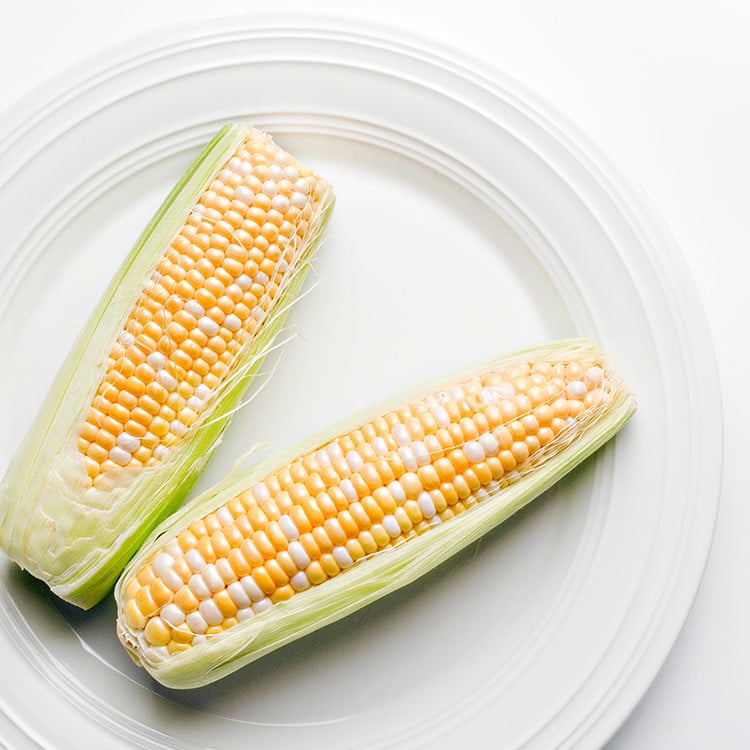
How to Freeze Corn
Freezing sweet corn preserves its shelf life and means you’ll enjoy the taste of summer year-round! In this post, I’ll explain how to freeze corn both on and off the cob.
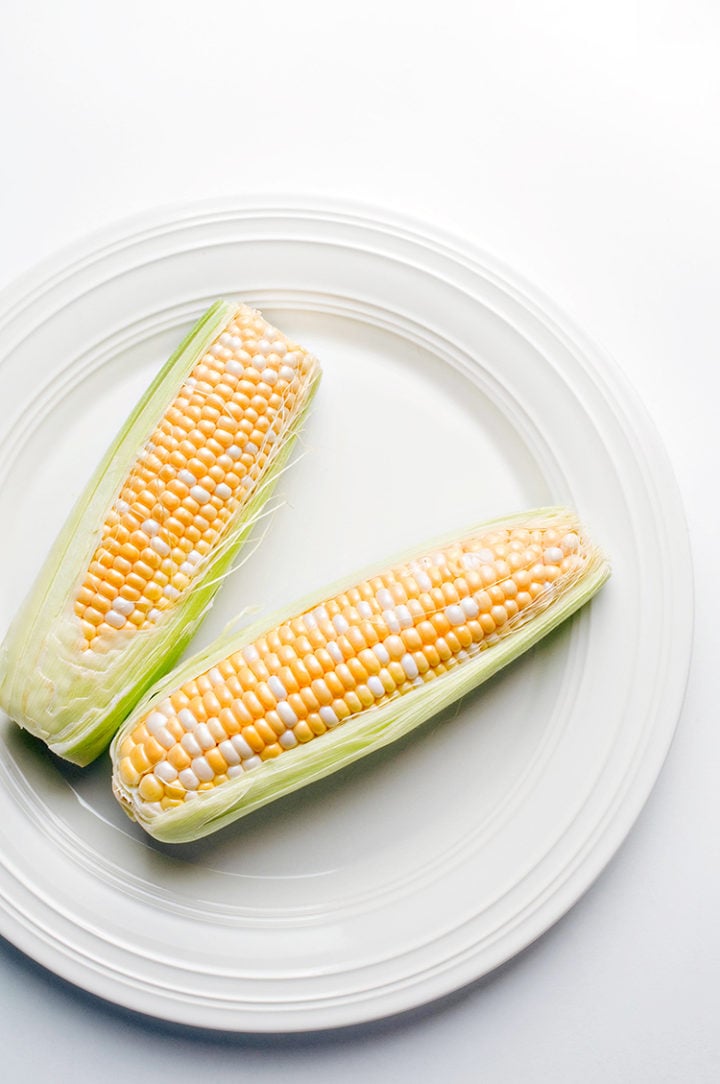
Why Bother Freezing Sweet Corn?
Neither store-bought canned or frozen corn compares to the flavor and texture of in-season sweet corn. Fresh sweet corn is fragrant, juicy, and so sweet!
If you’ve never considered freezing corn before, this is the summer to try it! By freezing sweet corn, you’ll be able to extend its shelf life throughout the fall and winter to use in soups, chowders, dips, and more.
Knowing how to freeze sweet corn is especially handy if you want to stock up on corn when it’s on sale during the summer, or if you grow it yourself and wind up with more than you can eat fresh off the cob (lucky you!).
In this post, I’ll explain everything you need to know about freezing sweet corn, including whether or not you should blanch it, whether it should be frozen on or off the cob, and more.
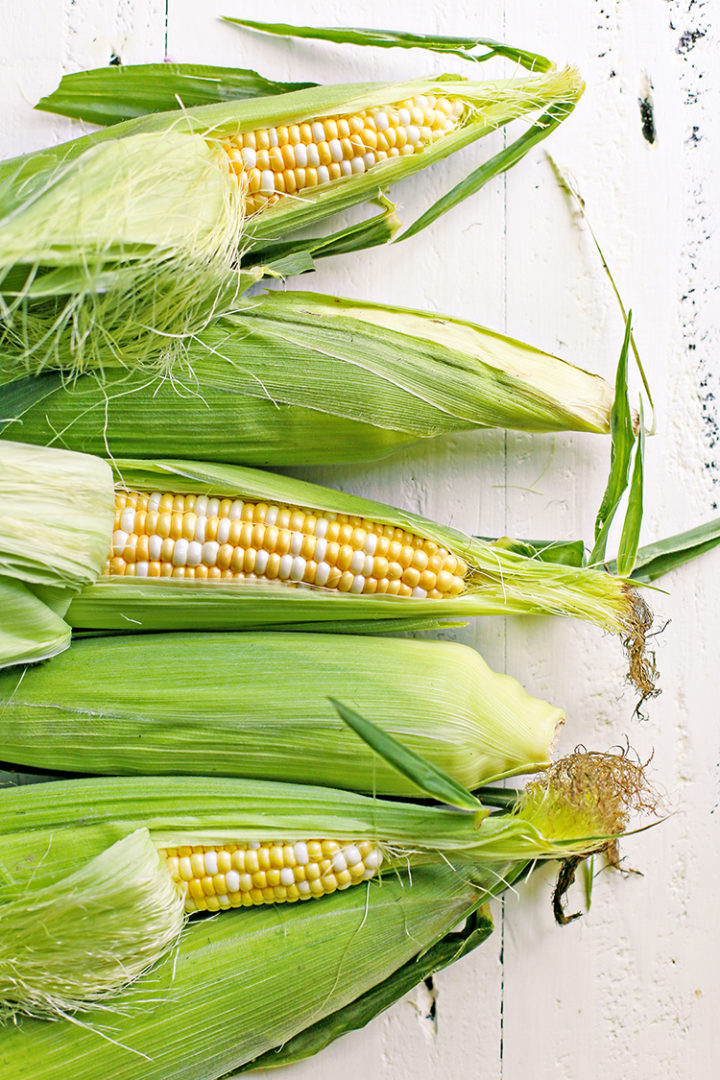
How to Choose the Best Corn for Freezing
When it comes to freezing corn, it’s important that you freeze the corn when it’s at its peak.
If you’re at a farmers market or a produce stall, ask when the corn was picked. Corn that was picked that day will deliver the best results and should be frozen ASAP.
Other things to consider when choosing corn on the cob:
- You want the corn silk (the fibers sticking out of the top of the husk) to be brown and sticky. If they’re black or dried out, it’s an old ear of corn.
- The corn silk should also smell sweet and fragrant.
- Feel the corn kernels through the husk. Make sure they feel plump and that there aren’t a lot missing.
- The husk itself should be bright green in color and wrapped tightly around the cob. If the husk is yellowing or super dry, don’t buy it.
Tools Needed for Freezing Corn
You won’t need all of these tools to freeze corn on the cob. You’ll need either freezer vacuum bags, regular freezer bags, or freezer-safe containers. I prefer using freezer vacuum bags as I find they prevent freezer burn the best, but use what you have on hand.
- Vacuum bags: Freezing corn in vacuum bags keeps them fresher for longer and is the best method for avoiding freezer burn.
- Freezer bags: Make sure to suck all the air out of the bag before sealing it. You can use your mouth or a straw to do this.
- Freezer-safe containers: Choose containers that can go straight from the freezer to the fridge, so you can easily thaw the sweet corn later.
- Tongs: Makes removing the corn cobs from the pot of boiling water easier and safer (if you’re blanching the corn, that is).
- Large mixing bowl: If blanching the corn, you’ll need a large heat-proof bowl handy for the ice bath.
- Large pot: You’ll need a pot that’s large enough to fully submerge the whole corn cobs in water. You’ll only need a pot if you plan on blanching the corn before freezing it.
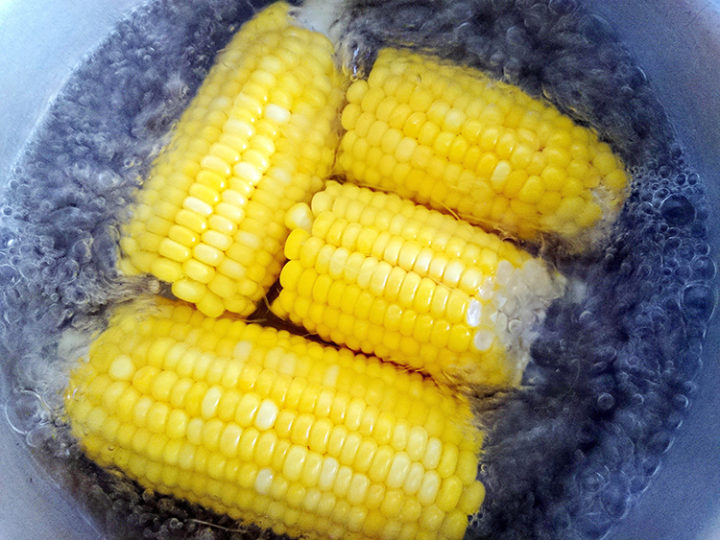
How to Blanch Corn for Freezing
Although you don’t need to blanch corn prior to freezing it, I recommend doing so. Here’s how to blanch corn for freezing:
- Shuck the corn. Be sure to remove all the tiny corn silk fibers that you can.
- Fill a large pot halfway with water. In another large bowl, add water and ice cubes (this will be your ice bath).
- Heat the large pot of water until boiling. Add the shucked ears of corn and cook for 3 to 4 minutes. I recommend turning the corn at the halfway mark.
- Remove the corn cobs from the boiling water (I like to use a pair of tongs to do this). Immediately submerge in the ice bath.
- Let the corn stand in the ice bath for about 5 minutes. This prevents the corn from cooking any further.
- Remove the corn from the ice bath. Pat dry with a clean kitchen towel.
Do You Have to Blanch Corn Before Freezing It?
Not necessarily! Blanching prolongs the shelf life of frozen corn as well as preserving the flavor and texture. However, you can freeze raw corn (on or off the cob) without blanching if desired.
Katie’s Tip: Blanching is the process of cooking corn (or another vegetable) in boiling water for a short period of time, usually just a couple minutes. This brief boiling period slows the enzymes in the corn from breaking it down too quickly once frozen. By blanching corn before freezing it, you’ll extend its shelf life in the freezer.
How Long to Blanch Corn for Freezing?
You’ll need to blanch corn for freezing for about 3 to 4 minutes, on the cob. Rotate the cob halfway through so it cooks evenly.
Should You Add Salt to the Water When Blanching Corn?
No, you shouldn’t add salt to the pot of water you’ll be blanching the corn in. Adding salt can toughen the corn kernels.
Instead, I recommend salting the corn later when you’re ready to cook with it. This way you can salt the entire dish to your liking.
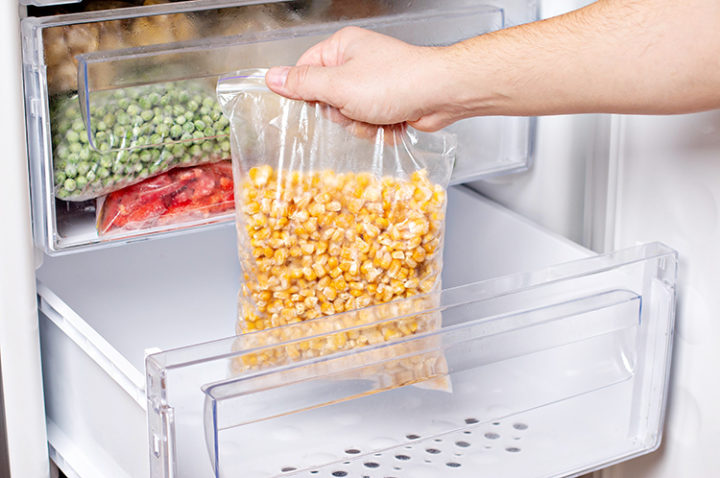
How to Freeze Corn (4 Ways!)
You have a few options when it comes to freezing corn: on or off the cob, and blanched or raw.
Pick whichever freezing method is best for you, just keep in mind how you plan on using the freezer corn later!
1. Freezing Corn on the Cob (Without Husk)
Can you freeze corn on the cob? Yes, you can freeze corn with or without the husk.
I’ll first explain how to freeze corn on the cob without the husk. Shucking and then blanching corn cobs prior to freezing them is the most common method for freezing corn.
Blanching helps to preserve the texture of the corn, and by removing the husks you’re minimizing the amount of space the corn cobs will take up in your freezer.
Although this method requires more prep work up front, it’s easier to thaw and cook the frozen corn later on.
To freeze corn on the cob without the husks:
- Blanch the corn as instructed in the section above (full directions can be found in the recipe card at the end of this post as well).
- Transfer the corn cobs to a baking sheet, then place the baking sheet in the freezer.
- Freeze for just 1 to 2 hours.
- Once firm, transfer the frozen corn cobs to freezer or vacuum bags.
- Label, date, and freeze for up to 6 months.
2. Freezing Corn on the Cob (in the Husk)
Can you freeze corn in the husk? Yes!
The major benefit of freezing corn on the cob in the husk is that there’s no need to blanch it first. The thick husks help to prevent freezer burn as well.
However, by skipping the blanching process, you’re shortening the shelf life of your frozen corn. It will last only four months in the freezer and those bulky husks will also take up extra freezer space.
If you decide to freeze corn on the cob in its husk, I recommend doing so with freshly picked corn for the best results.
To freeze corn on the cob with the husks:
- Don’t peel any part of the husk, not even to peek at the cob beneath!
- Either wrap the corn (husk and all) in plastic wrap. Or, seal insider freezer bags or vacuum seal bags.
- Freeze the corn for up to four months.
- When ready to eat, cook from frozen. The easiest way is to boil them. Do not thaw first.
3. Freezing Corn off the Cob (Blanched)
Can you freeze corn off the cob? Yes!
Freezing corn off the cob will result in frozen corn just like you buy at the grocery store (but better!).
If you plan on using the corn in soups, stews, or other recipes later on, blanching and then freezing the corn off the cob makes the most sense. Otherwise you’ll just waste freezer space by freezing the entire corn cob right now.
This method for freezing sweet corn requires more prep work up front, but this is the most versatile method for freezing corn and it’s what I recommend doing.
To freeze corn off the cob that’s been blanched:
- Blanch the corn as instructed above in the section above (full directions can be found in the recipe card at the end of this post as well).
- Once cool enough to handle, hold the corn cob vertically. Place the flat bottom of the cob against a cutting board.
- Use a sharp chef’s knife to cut the kernels off the cob. Start at the top (near where you’re holding the corn cob) and cut downwards. Never try to cut towards your body!
- Transfer the corn kernels to a freezer or vacuum bag. I like to break up any big chunks with my hands.
- Label, date, and freeze the corn kernels for up to six months.
4. Freezing Corn off the Cob (Raw)
Can you freeze raw corn kernels? Yes!
Frozen raw sweet corn changes texture once frozen, so only use this method if you plan on cooking the corn kernels later on in a soup, sauce, chowder, or something similar.
Freezing raw corn kernels isn’t as simple as freezing corn cobs in their husks, but the prep work is still fairly minimal. Just cut the kernels off the corn cob, seal, and freeze!
To freeze raw corn off the cob:
- Shuck the corn, removing the husks and silks.
- Hold the corn cob vertically. Place the flat bottom of the cob against a cutting board.
- Use a sharp chef’s knife to cut the kernels off the cob. Start at the top (near where you’re holding the corn cob) and cut downwards.
- Transfer the raw corn kernels to a freezer bag or vacuum bag.
- Label, date, and freeze the corn kernels for up to four months.
For the complete ingredient list and detailed instructions, scroll to the bottom of this post for the FREE printable recipe card.
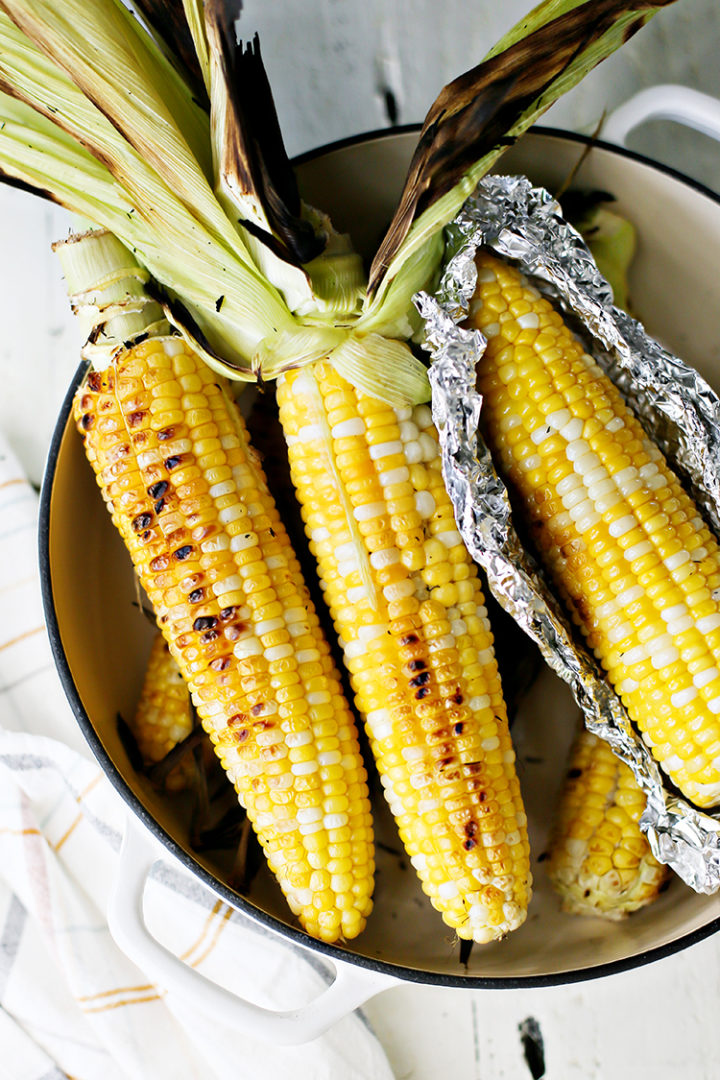
Can You Freeze Grilled or Roasted Corn?
Yes, you can freeze grilled corn or roasted corn so long as you let it cool to room temperature before freezing.
Freezing pre-cooked corn works best if you first cut the corn off the cob. From there, you can freeze it like you would blanched corn. You could technically freeze the whole corn cob as well, but the texture may be affected once frozen and reheated.
Is it Better to Freeze Corn On or Off the Cob?
It depends on how you plan on using the frozen corn later on!
If you know you’ll be using your stash of freezer corn to make soups, stews, chowders, or batters, it’s better to blanch and freeze the corn and then cut it off the cob prior to freezing. Why make more work for yourself later on when you could get the prep work over now?
If you plan on boiling or roasting the frozen corn on the cob, then freeze on the cob.
If you’re unsure, I recommend blanching and freezing the corn off the cob. This will be the most similar to the frozen corn you buy at the store and gives you the most options later on.
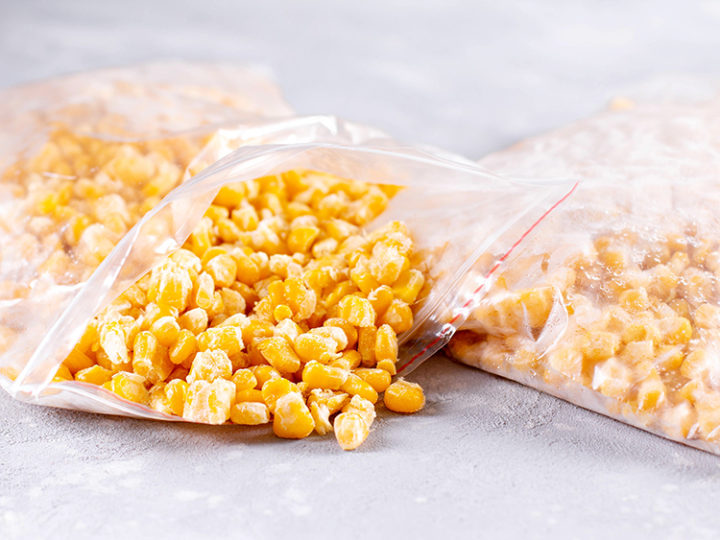
How Long Does Frozen Corn Last?
If the sweet corn was blanched before being frozen, it will last up to six months in the freezer if properly stored.
If the sweet corn was NOT blanched before being frozen, it will last up to four months in the freezer if properly stored.
How to Thaw Frozen Corn
Thawing frozen corn is an easy process. You can either leave the corn in the fridge overnight, or you can employ one of these quick methods:
- Corn cobs: Hold under running cold tap water. It should thaw in a matter of minutes. Or, submerge in a bowl of cold tap water to thaw, then cook as desired.
- Corn kernels: Place in a colander, then run under cold tap water. Drain thoroughly and pat dry, if needed.
Do You Always Have to Thaw Frozen Corn?
Nope! Frozen corn kernels can be added straight to a soup or chowder. It just may prolong the cook time by a couple minutes.
Frozen blanched corn cobs can be boiled from frozen, but they should be thawed first if planning to roast them.
More Summer Freezing Tutorials:
Freezing basil minimizes food waste and ensures you always have some on hand for soups, stews, sauces, and more! This post explains how to freeze basil 4 ways, plus you’ll get access to 10+ basil recipes.
This guide explains how to freeze blueberries, plus it answers the most commonly asked questions about thawing frozen blueberries and using them in recipes.
Freezing raspberries is a wonderful way to enjoy summer’s harvest year-round! This guide explains how to freeze raspberries, plus it answers the most commonly asked questions about thawing frozen raspberries and using them in recipes.
Freezing spinach is really simple, and handy if you would like to have extra vegetables stored in your freezer. Come learn all about the 4 different ways I like to freeze spinach and several ideas for what to make with frozen spinach!
Who doesn’t love a good kitchen tip? Looking for more kitchen tutorials? Check out the entire Kitchen Tips and Tricks archive for lots of great ideas!
Stay Inspired in the Kitchen!
Want more delicious recipes, kitchen tips, and meal inspiration? Sign up for the Good Life Eats Newsletter and get:
✔ Tried-and-true recipes—from quick weeknight meals to special occasion favorites.
✔ Seasonal meal ideas—helping you make the most of fresh, in-season ingredients.
✔ Time-saving kitchen tips—boosting your confidence and creativity in the kitchen.
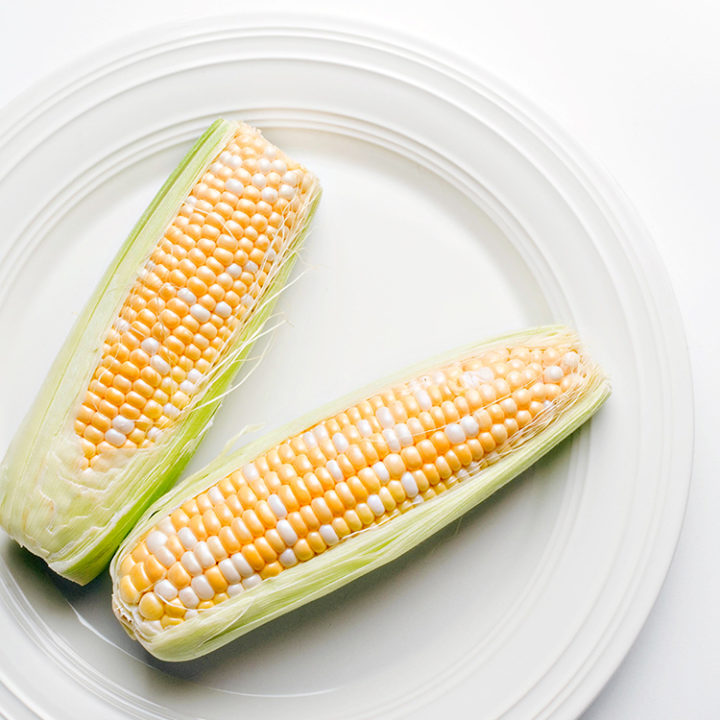
How to Freeze Corn
Freezing sweet corn preserves its shelf life and means you’ll enjoy the taste of summer year-round!
Materials
- 3 pounds sweet corn
- Water
- Ice
Instructions
HOW TO BLANCH CORN FOR FREEZING:
- Shuck the corn. Be sure to remove all the tiny corn silk fibers that you can.
- Fill a large pot halfway with water. In another large bowl, add water and ice cubes (this will be your ice bath).
- Heat the large pot of water until boiling. Add the shucked ears of corn and cook for 3 to 4 minutes. I recommend turning the corn at the halfway mark.
- Remove the corn cobs from the boiling water (I like to use a pair of tongs to do this). Immediately submerge in the ice bath.
- Let the corn stand in the ice bath for about 5 minutes. This prevents the corn from cooking any further.
- Remove the corn from the ice bath. Pat dry with a clean kitchen towel.
TO FREEZE CORN ON THE COB WITHOUT THE HUSKS:
- Blanch the corn as instructed in the section above.
- Transfer the corn cobs to a baking sheet, then place the baking sheet in the freezer.
- Freeze for just 1 to 2 hours.
- Once firm, transfer the frozen corn cobs to freezer or vacuum bags.
- Label, date, and freeze for up to 6 months.
TO FREEZE CORN ON THE COB WITH THE HUSKS:
- Don’t peel any part of the husk, not even to peek at the cob beneath!
- Either wrap the corn (husk and all) in plastic wrap. Or, seal insider freezer bags or vacuum seal bags.
- Freeze the corn for up to four months.
- When ready to eat, cook from frozen. The easiest way is to boil them. Do not thaw first.
TO FREEZE CORN OFF THE COB THAT’S BEEN BLANCHED:
- Blanch the corn as instructed above in the section above.
- Once cool enough to handle, hold the corn cob vertically. Place the flat bottom of the cob against a cutting board.
- Use a sharp chef’s knife to cut the kernels off the cob. Start at the top (near where you’re holding the corn cob) and cut downwards. Never try to cut towards your body!
- Transfer the corn kernels to a freezer or vacuum bag. I like to break up any big chunks with my hands.
- Label, date, and freeze the corn kernels for up to six months.
TO FREEZE RAW CORN OFF THE COB:
- Shuck the corn, removing the husks and silks.
- Hold the corn cob vertically. Place the flat bottom of the cob against a cutting board.
- Use a sharp chef’s knife to cut the kernels off the cob. Start at the top (near where you’re holding the corn cob) and cut downwards.
- Transfer the raw corn kernels to a freezer bag or vacuum bag.
- Label, date, and freeze the corn kernels for up to four months.
Recommended Products
As an Amazon Associate and member of other affiliate programs, I earn from qualifying purchases.
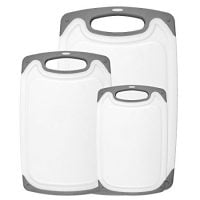
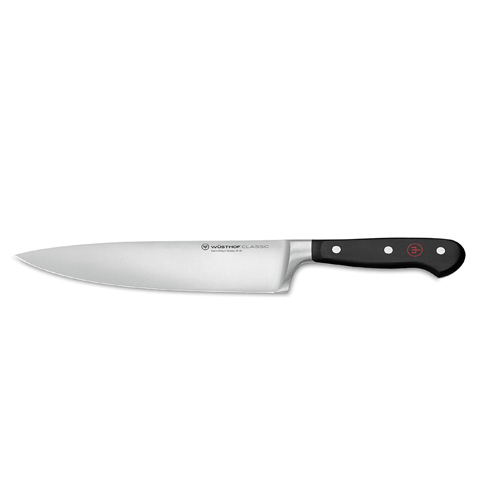
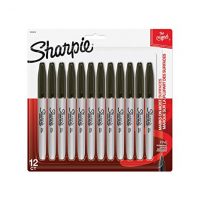
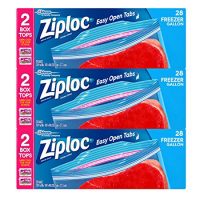


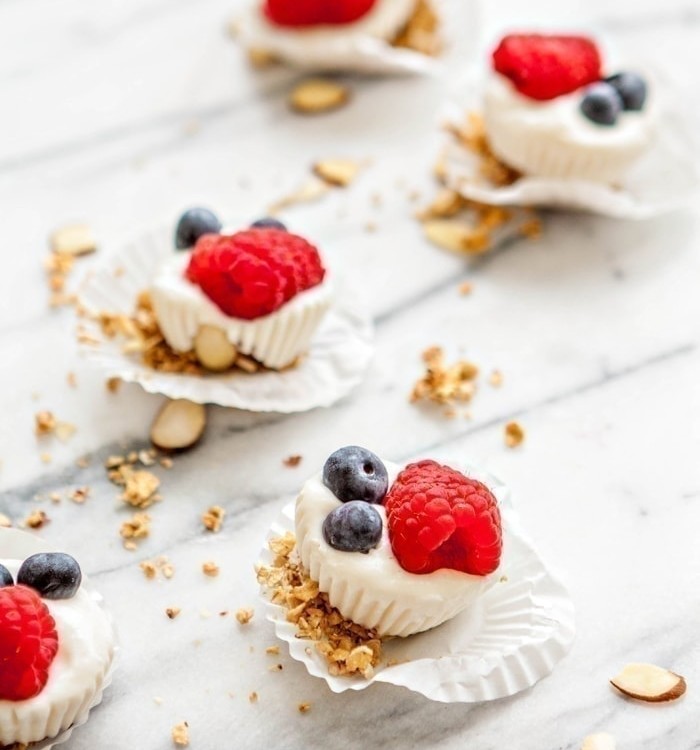
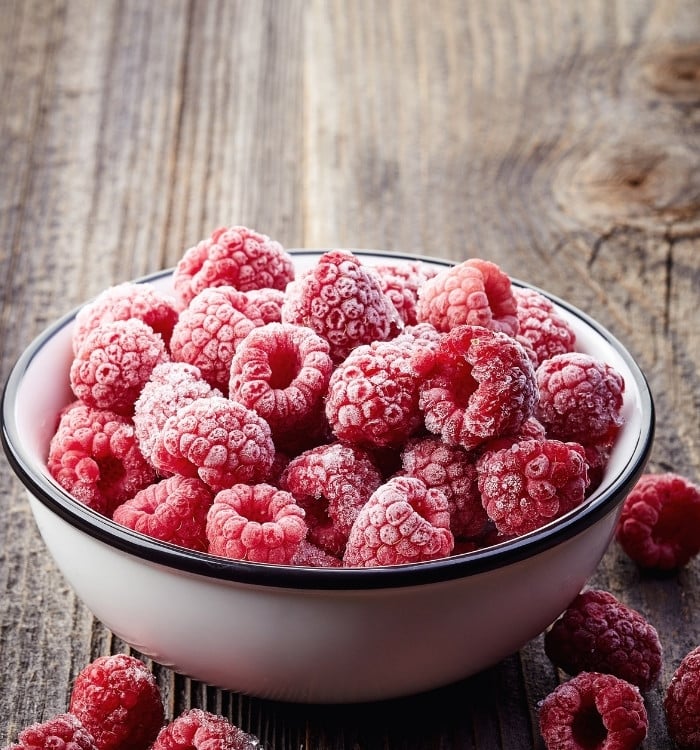
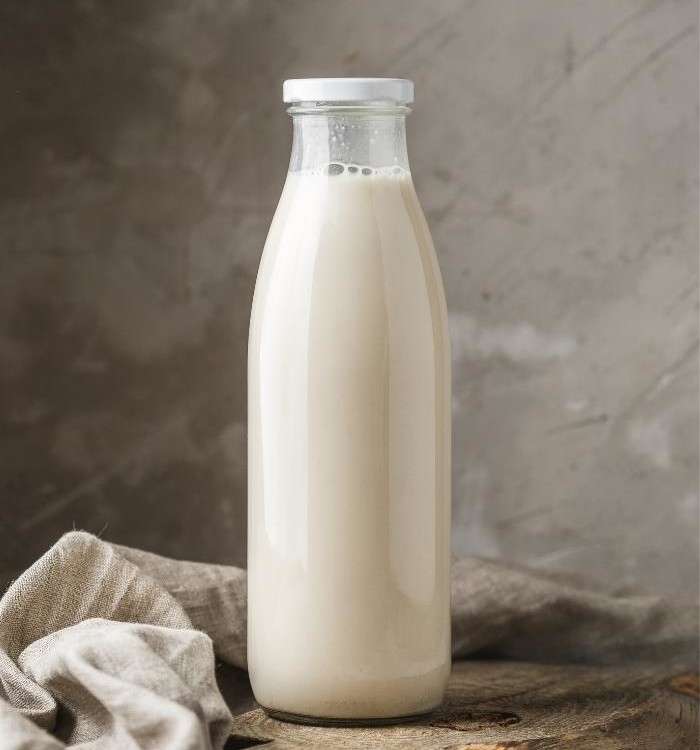
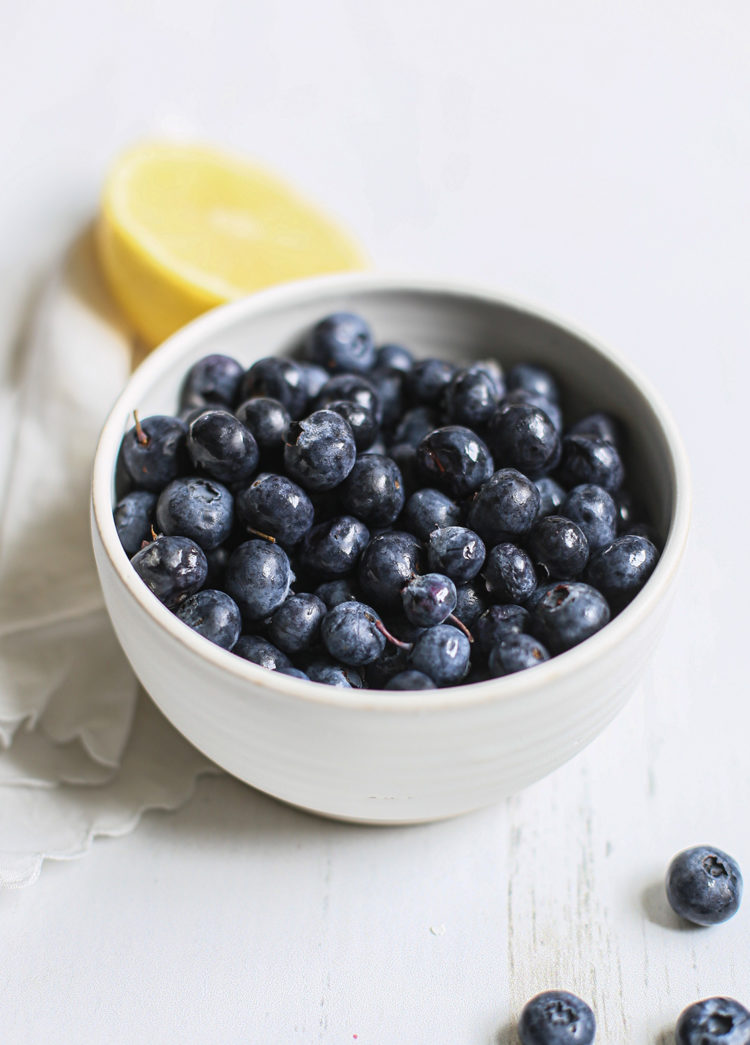
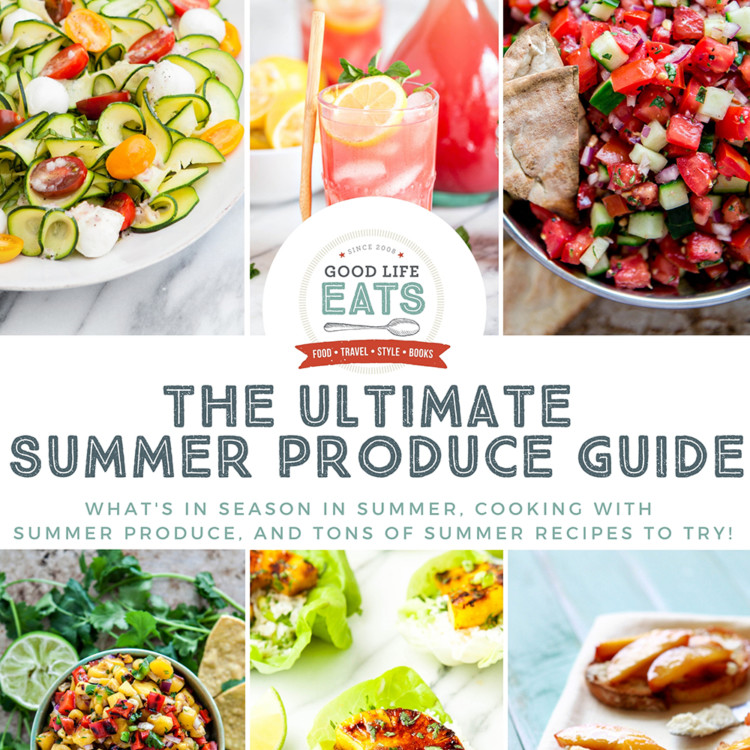
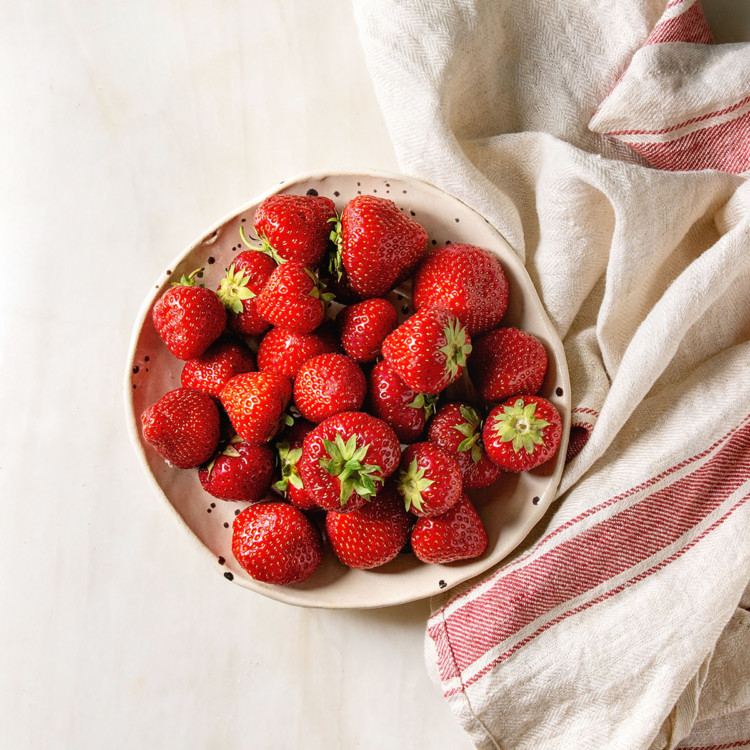
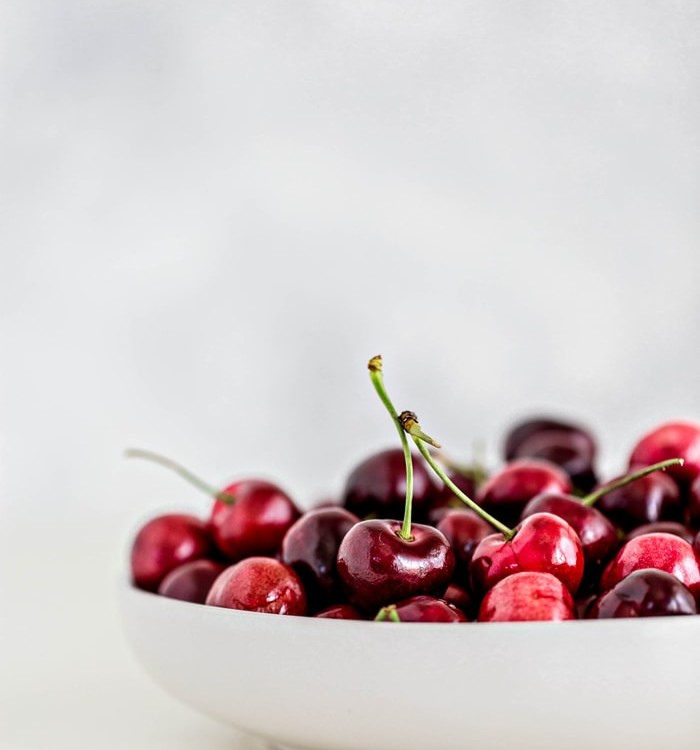
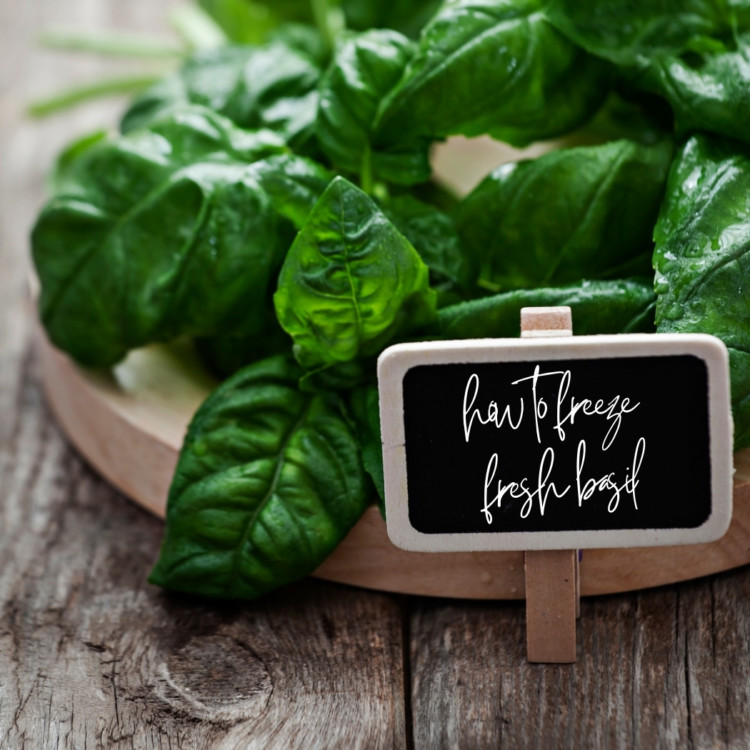

Gilbert Kaiser says
when vaccum pakaging corn kernels blanched off the cob will that squeeze the juices out of the kernels?
Katie says
I haven’t had that problem. Mine just sucks the air out of the bag. If you’re concerned, you can always seal a bag most of the way, insert a straw, and manually suck the air out. It is less powerful than a vacuum sealer but still removes a lot of air. Hope that helps!